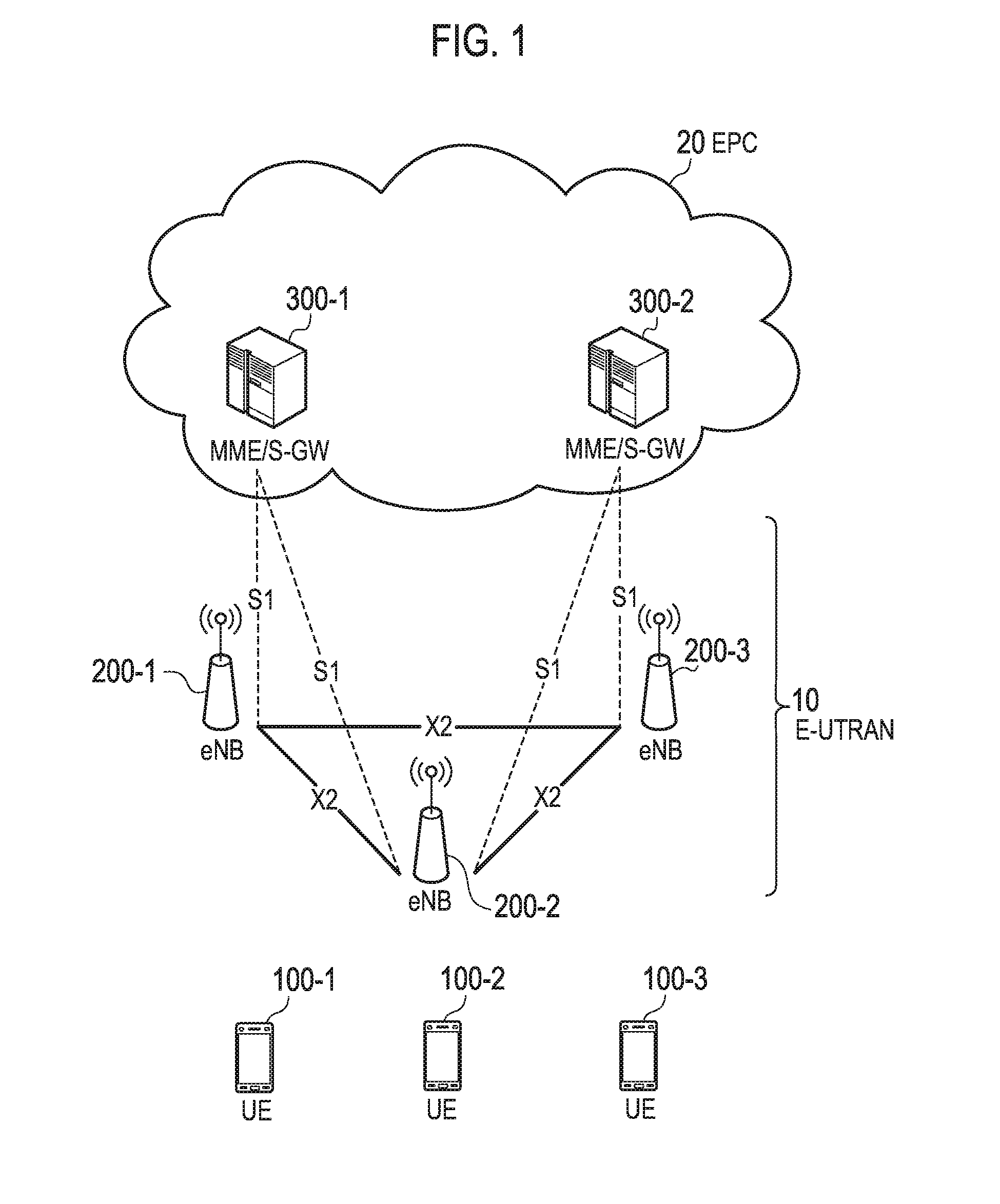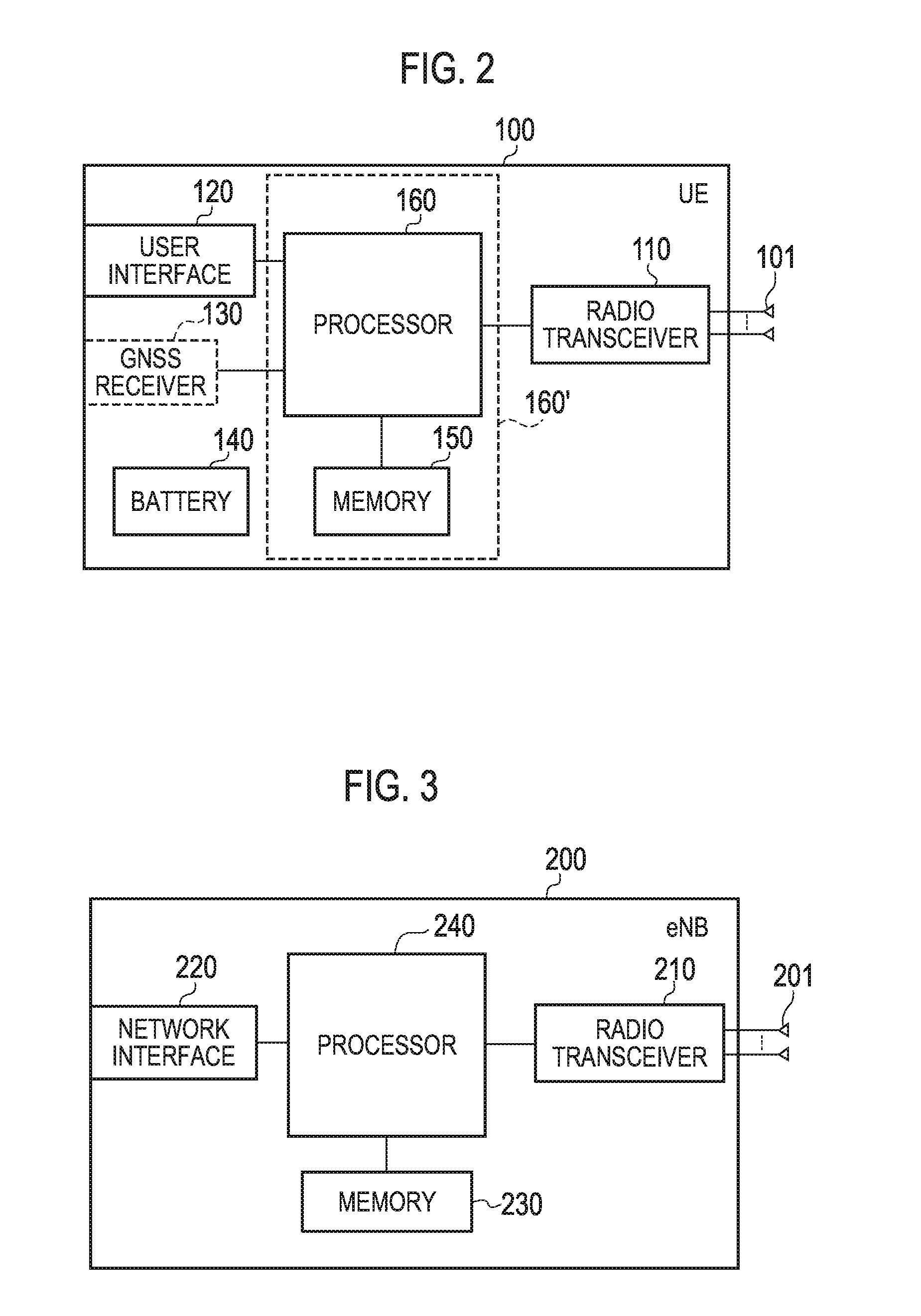Communication control method, master base station, secondary base station, and user terminal
a communication control and master technology, applied in the direction of connection management, electrical equipment, transmission, etc., can solve the problems of rlf/hof, throughput degradation, and the inapplicability of the enhanced dual connectivity procedure over the s1 interfa
- Summary
- Abstract
- Description
- Claims
- Application Information
AI Technical Summary
Benefits of technology
Problems solved by technology
Method used
Image
Examples
first embodiment
Operation
(1) Operation Scenario
[0129]In the first embodiment, a scenario in which the master cell is a macro cell and a secondary cell is a cell (small cell) having a coverage narrower than that of the macro cell is mainly considered. Here, the small cell is, for example, a picocell or a femtocell that has a coverage overlapping at least a part of the coverage of the macro cell. By configuring a cell of wider coverage as the master cell, a movement of the UE 100 in the RRC connected state can be followed, i.e., mobility is improved.
[0130]FIG. 8 is a diagram illustrating an operating environment according to the first embodiment.
[0131]As illustrated in FIG. 8, the UE 100 is located in an overlapping area of the coverage of the macro cell 1 and the coverage of the small cell, and communicates in the dual connectivity scheme in combination of the macro cell 1 (MeNB 200M1) and the small cell (SeNB 200S). The small cell is located near a boundary of two macro cells 1 and 2. The UE 100 mo...
second embodiment
[0175]Hereinafter, regarding a second embodiment, differences from the first embodiment are described mainly.
[0176](1) Operation Scenario
[0177]FIG. 12 is a diagram illustrating an operating environment according to the second embodiment.
[0178]As illustrated in FIG. 12, in the second embodiment, a plurality of small cells 1 and 2 are provided in one macro cell. The UE 100 is located in an overlapping area of a coverage of a macro cell and a coverage of a small cell 1, and communicates in a dual connectivity scheme in combination of the macro cell (MeNB 200M) and the small cell 1 (SeNB 200S1). The UE 100 moves toward the small cell 2 (SeNB 200S2). In the second embodiment, the SeNB corresponding to the UE 100 is switched from an S-SeNB 200S1 to a T-SeNB 200S2. Hereafter, the SeNB 200S1 is referred to as a source SeNB (S-SeNB), and the SeNB 200S2 is referred to as a target SeNB (T-SeNB).
[0179](1) Operation Pattern 1
[0180]FIG. 13 is a sequence diagram illustrating an operation pattern 1...
third embodiment
(2) Operation
[0214]In the third embodiment, a node that performs handover determination (HO decision) or handover acknowledgment control (Admission Control) in handover control according to the first and the second embodiments makes a determination related to the dual connectivity scheme on the basis of whether the S-GW 300U that accommodates the MeNB 200M and the S-GW 300U that accommodates SeNB 200S coincide with each other. The node is a communication control apparatus, such as the MeNB 200M or the SeNB 200S. For example, the node determines not to apply the first UP architecture when the S-GW 300U that accommodates the MeNB 200M and the S-GW 300U that accommodates the SeNB 200S do not coincide with each other.
[0215]Further, as illustrated in FIG. 16, with reference to the first embodiment, on the basis of whether the second UP architecture can be applied, the node determines whether to perform handover after releasing the connection between the SeNB 200S and the UE 100 (basic se...
PUM
 Login to View More
Login to View More Abstract
Description
Claims
Application Information
 Login to View More
Login to View More - R&D
- Intellectual Property
- Life Sciences
- Materials
- Tech Scout
- Unparalleled Data Quality
- Higher Quality Content
- 60% Fewer Hallucinations
Browse by: Latest US Patents, China's latest patents, Technical Efficacy Thesaurus, Application Domain, Technology Topic, Popular Technical Reports.
© 2025 PatSnap. All rights reserved.Legal|Privacy policy|Modern Slavery Act Transparency Statement|Sitemap|About US| Contact US: help@patsnap.com



